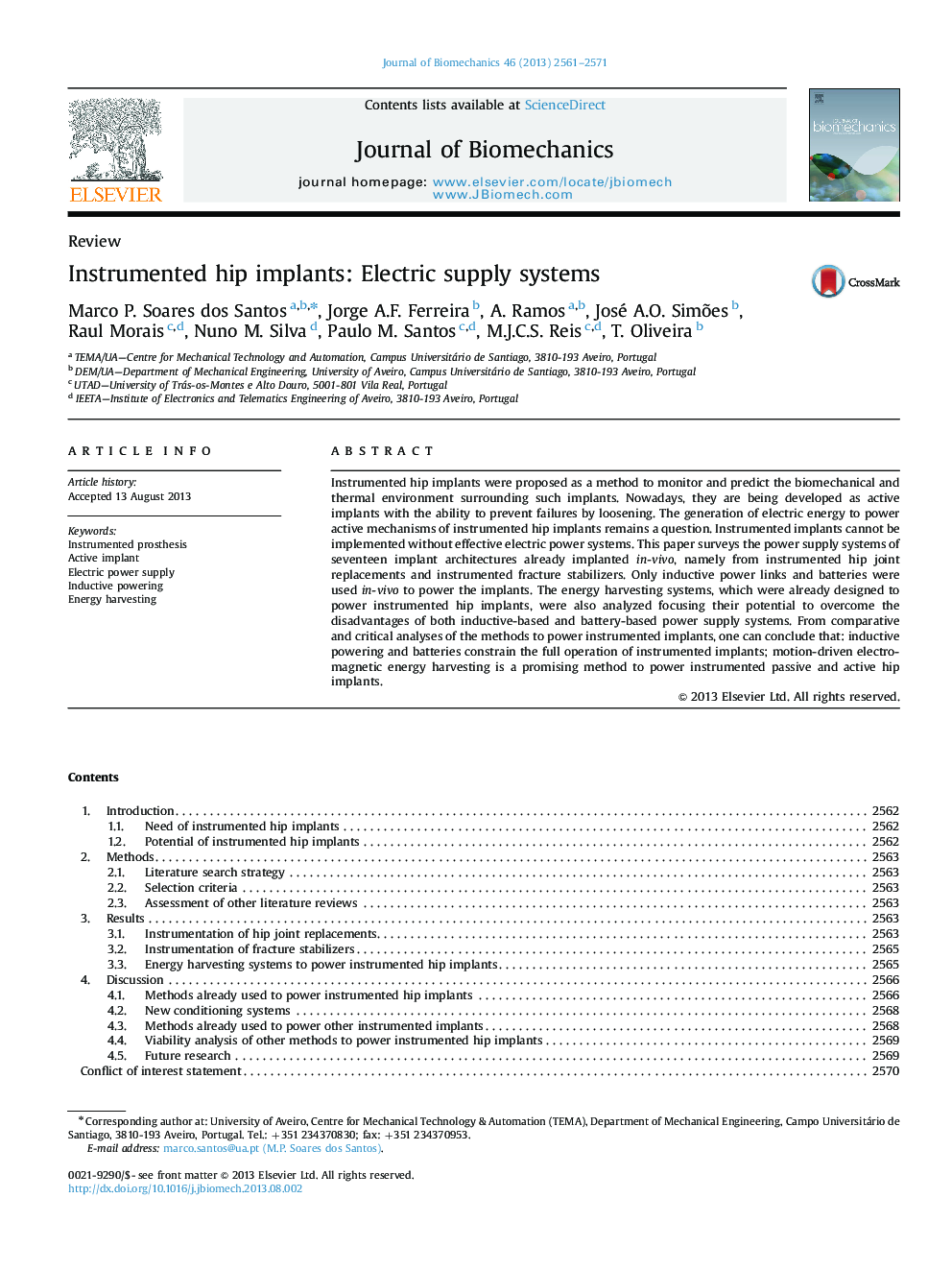| Article ID | Journal | Published Year | Pages | File Type |
|---|---|---|---|---|
| 10432293 | Journal of Biomechanics | 2013 | 11 Pages |
Abstract
Instrumented hip implants were proposed as a method to monitor and predict the biomechanical and thermal environment surrounding such implants. Nowadays, they are being developed as active implants with the ability to prevent failures by loosening. The generation of electric energy to power active mechanisms of instrumented hip implants remains a question. Instrumented implants cannot be implemented without effective electric power systems. This paper surveys the power supply systems of seventeen implant architectures already implanted in-vivo, namely from instrumented hip joint replacements and instrumented fracture stabilizers. Only inductive power links and batteries were used in-vivo to power the implants. The energy harvesting systems, which were already designed to power instrumented hip implants, were also analyzed focusing their potential to overcome the disadvantages of both inductive-based and battery-based power supply systems. From comparative and critical analyses of the methods to power instrumented implants, one can conclude that: inductive powering and batteries constrain the full operation of instrumented implants; motion-driven electromagnetic energy harvesting is a promising method to power instrumented passive and active hip implants.
Keywords
Related Topics
Physical Sciences and Engineering
Engineering
Biomedical Engineering
Authors
Marco P. Soares dos Santos, Jorge A.F. Ferreira, A. Ramos, José A.O. Simões, Raul Morais, Nuno M. Silva, Paulo M. Santos, M.J.C.S. Reis, T. Oliveira,
